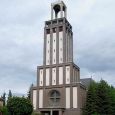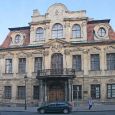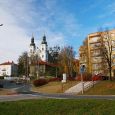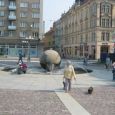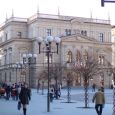Opava
Advertisement
By Air
Go to Ostrava Mosnov, Brno Turany or Praha Ruzyne airports.Nearest airport (Ostrava) is about 80 km away.Smaller aircraft may land on Dolni Benešov or Krnov airport about 20 km away.
By Train
Commuter trains connect Opava with Ostrava, which is a major railway hub with direct trains to Prague and many cities in Poland, Slovakia, Austria etc.The trains go hourly and the trip from Ostrava takes 40 minutes.
By Bus
The first tram in Opava started in 1905.From the main routes between East Station and the hospital odpojovaly two branch lines - into urban orchards and Katerinky.Routes are subject to renewal in 1912 and 1948.In 1950 it was decided to replace the unsatisfactory modern trams trolleybuses.The last tram line and was abolished six years later.Trolley buses, which replaced the tram pulled out the first time in 1952.Their network is gradually expanded. In the 70 and 80 years was due to the reconstruction of streets in some sections of trolley service stopped.In 2002 she was finally finished a new depot in Kylesovice, which replaced the original, which was determined primordially trams.
Church of St. Adalbert
is a monumental nave building was built between 1675 and 1681 in Opava Lower Square in place of a small Gothic church, which was founded before 1350 and 16th century dedicated to St. George.It is protected as a cultural monument of the Czech Republic.The church building is incorporated into the complex Jesuit residence dating from 1631 to 1642 (rebuilt in the years 1711 to 1723 ), which later served as a dormitory for example a grammar school ( 1643 - 1773 ) and the provincial council (since 1853 ) and which now houses the Provincial Archives in Opava.On both sides of the ship are interconnecting side chapels.In 1945 destroyed much of the frescoes and the main altar . Before the church is a Marian column from 1675.
Silesian Museum
is the oldest (founded 1814) and the third largest (after the National and the Moravian Museum ) institution of its kind in the Czech Republic. Silesian Museum serves as a museum within the meaning of § 10, paragraph 6 of the Act 122/2000 Coll. on the protection of museum collections and amending certain other laws . According to the deed issued by 27th 12th 2000, the organization established by the Ministry of Culture of the Czech Republic for the purpose of acquiring, permanent storage, processing and making scientific collections of museum character. Silesian Museum collects material collection documents the development of nature, including live plants and animals, prehistory and history of Czech and foreign origin, especially from the historical Silesia , northern and northeastern Moravia , especially in arts , including music history , literature and theater , and military history . The collection is based on scientific knowledge and its own collecting policies.
Silesian Theatre
Silesian Theatre operates two files, drama and opera orchestra. Part of the Silesian Theatre and ballet and concert activities. Theatre productions in the repertoire lists of world and Czech authors that the audience knows from other international and domestic scenes.The theater was built according to the model and Schikanderova decorated Viennese painter Sacchetim. In 1854, ordered the city administration plans for rebuilding the theater at the Viennese architect Eduardo Kuschee, but for lack of funds has not been implemented. In 1855 were made only minor interior repairs, and four years later was exchanged for the original oil-gas lighting. In 1861 the theater was introduced warm air heating. 4.27 1882, work began on reconstruction of the theater. The theater was opened on the 20th září the 1883rd 16th theater burned down in June 1909. Repairs were made to the interior in the style of Louis XVI, a theater designed by the Viennese painter Ferdinand Maser. This adaptation is challenging still held in 1909.
Church of St. Hedwig
is a single-aisle church in the shape of a double cross formed by transverse vessels and extended frontage located on the Square of St. Hedwig in Opava.The facade consists of three blocks in a pyramid arrangement zvonicovým floor and ended a great cross.Perimeter of the tower circulates tape inscription written in Latin, which refers to the originally intended function of the church as a memorial.The church is one of the last works of architect Leopold Bauer.It is administered by the Roman Catholic parish of Our Lady of Opava.
Blucher Palace
Richly adorned with stucco facade, the Baroque aristocratic palace was built by Jiří Rudolf Wipplar in the 1830s in the place of an aristocratic house that originally belonged to the family of Tvorkovský from Kravare.Its next owner Count Jan Larisch-Monnich rebuilt the palace after it had burned down.The palace then passed by marriage to the possession of Gebhard Blücher, a grandson of the victor over Napoleon at Waterloo.František Stratil, a famous Opava attorney, Silesian revivalist, and member of the provincial parliament lived in the palace after it had been converted into an apartment house.From 1932 to 1938 the Agricultural museum was situated here.Today the building houses the scientific department of the Silesian Provincial Museum.
Information not available


